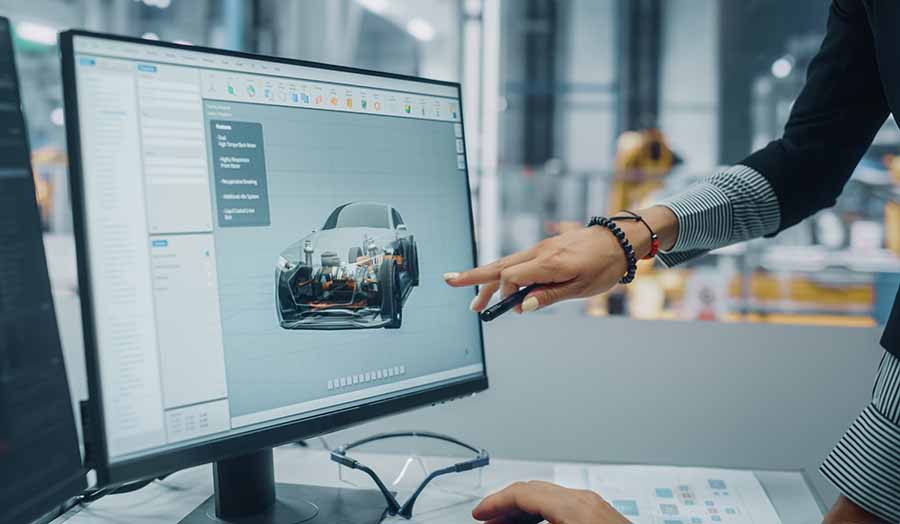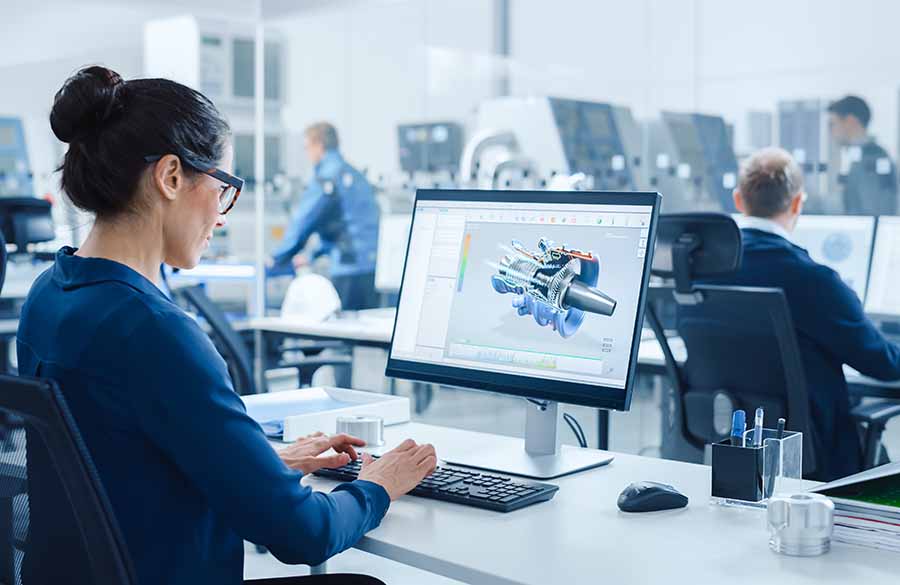- March 15, 2023
5 aspects about 3D modeling

Seeing realistic, capturing, or funny 3D visuals in digital space and 3D-printed items in the physical world has become a huge part of our lives. There are 3D social media avatars, fictional characters, aerospace models, architectural prototypes, and much more. Let’s go deeper and understand the 5 important aspects about 3D modeling.
3D modeling is the creation of a three-dimensional object with the help of software. Its history started in the 1960s when computer scientist Ivan Sutherland created the world’s first highly interactive computer program called Sketchpad. Since that time, 3D modeling has been growing with new technologies and techniques unlocking possibilities and allowing the creation of detailed objects with increased efficiency. It’s what made it possible to create mind-blowing three-dimensional animations that many of us love. The first full-length 3D film was Toy Story, a real sensation in the motion picture industry.

In many cases, 3D design involves creating three-dimensional representations from one-dimensional images or things. It is used by video game designers, animators, architects, industrial designers, and others.
Coming to realize that 3D modeling is a thing you’re interested in and that you are good at can be life-changing no matter as a hobby or a specialty.
5 facts about 3D modeling
The three-dimensional design presents revolutionary moments and great possibilities. Here we want to share with you some interesting information related to space.
3D modeling allows managing and keeping track of design data
3D modeling changed the process of design creation once and for all. It provides tools that help deal with a great volume of design revisions and evolutions with high productivity.
The ability to easily track data and make automated adjustments without the need to make endless updates speeds up the creative workflow and enables collaboration between teams, customers, and others. Due to mathematical forms like NURBS (Non-uniform rational B-spline), it’s possible to create accurate models times faster.
In cases when a design is created to be 3D printed, data management helps predict failures and meet quality requirements.
Parametric 3D modeling is used for designing buildings in the metaverse
Parametric 3D modeling, aka algorithmic modeling, is one of the trends in the design industry. It offers to create without boundaries of imagination due to programmed rules and tools. Parametric modeling is used in different industries such as fashion, manufacturing, aerospace, and others.
The approach also has a unique space in architecture. It allows the realization of various unrealistic, complex, and unique ideas that no other design method would allow. Moreover, parametricism is shaping architecture in the Metaverse, a virtual environment consisting of 3D digital worlds. Buildings and surroundings are essential for the metaverse to be engaging and to offer enhanced interconnection.
Soon we will see a virtual city with parametric buildings that have their identities in the virtual environment built by the world-famous architecture and design company Zaha Hadid Architects (ZHA). Residents of the city called Liberland will communicate via 3D avatars. The city is being built to allow libertarian and blockchain communities to come together and collaborate for crypto projects, events, and companies.
3D modeling helps create an immersive user experience
Creating immersive 3D experiences helps visual designers move into the rapidly evolving fields of 3D and extended reality (XR) design. XR, which consists of Virtual Reality (VR), Augmented Reality (AR), Mixed Reality (MR), and everything related, helps create engaging solutions that present multisensory journeys in the virtual world.

Technologies allow users to get more detailed information and visualization about various products and services. Demand for XR technologies has been increasing essentially.
According to Martin Stoddart, Principal Director at Accenture, “We’re shifting into a world where things are in 3D. People want to interact with virtual objects in their 3D worlds. We’re shifting from 2D objects that are flat text or flat video and moving outside of the screen and merging the physical and digital.”
3D modeling powers smart manufacturing along with other technologies
Today, 3D technologies allow far more than prototyping. Intelligent manufacturing systems have revolutionized the way things are produced, making it more flexible, automated, personalized, and cost-effective. Industrial 3D printers allow manufacturers to increase operational efficiency and produce things from different materials.
Together with other advanced technologies like Artificial Intelligence, cloud, big data, and Machine Learning (ML), 3D technologies are redefining manufacturing and driving its fast growth. It’s expected that the smart manufacturing market will reach $658 billion by 2029, increasing by a CAGR of 13.1%.
3D modeling allows the visualization of any design concept
With the use of 3D modeling software, it is possible to create 3D objects of any shape and structure. Programs enable modelers to visualize different design concepts and experiment with geography by manipulating points in virtual space and forming an object. There can be 3D models of products, environments, people, textures, and more.
Artists can choose to design objects for the virtual environment or create physical objects through 3D printing.
CEO of Zaha Hadid Architects, Patrik Schumacher, once said that the absorption of 3D printing innovation through manufacturing machines is nearly infinite as the way of uploading apps or versions of software services. He said:
“It has not only a big impact on all our lives in terms of becoming creatives, it is really rewarding to be innovative and creative right now, because the technological systems can absorb that innovation. That is truly wonderful”.
Sharing his thoughts about algorithmic design, Schumacher mentioned it will not only help become more efficient and be able to design much quicker and faster. But also our professions will grow and everybody will become “some kind of creative in this new world of computationally empowered design and production processes.“
Why learn 3D modeling?
Learning 3D modeling can be beneficial in several ways. The technology is used in many industries and applications to create realistic and detailed design concepts. Accordingly, demand for 3D models has been growing along with the number of designers pursuing careers in 3D design.

There are different career opportunities including video game design, 3D printing, 3D graphic design, animation, interior design, architectural design, web design, craft art, and more. Surfing through the internet, you’ll see that there are many job posts related to 3D modeling. Companies like Nike, Deloitte, Meta, and others are looking for 3D specialists.
It’s exciting that you can choose whether to be an individual entrepreneur creating and presenting your works, be a part of a company or be a freelancer.
According to CNBC, 3D CAD modeling saw a 297% surge in searches in the last 6 months on the online marketplace Fiverr and is one of the top 5 skills on the platform.
Learning 3D modeling can be a huge advantage even if it’s not your main occupation. You can use your creativity and make things like 3D avatars, and NFTs, or build models for printers, laser cutters, or computer numerical control (CNCs). You can monetize your skills or create things as a gift for yourself or others.
